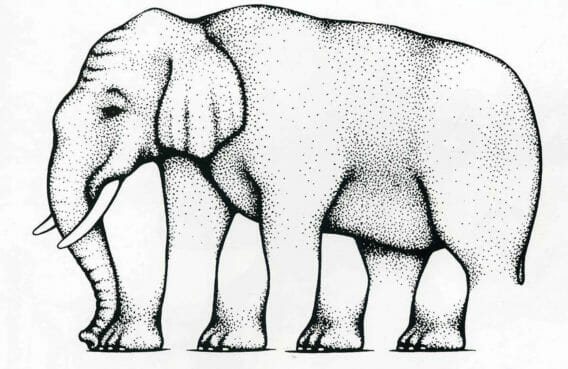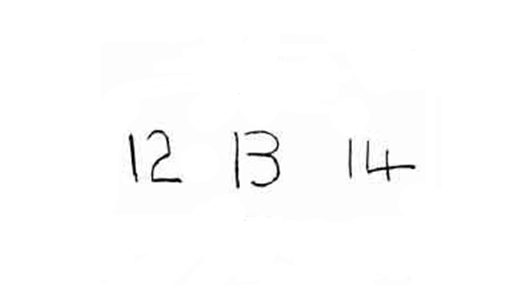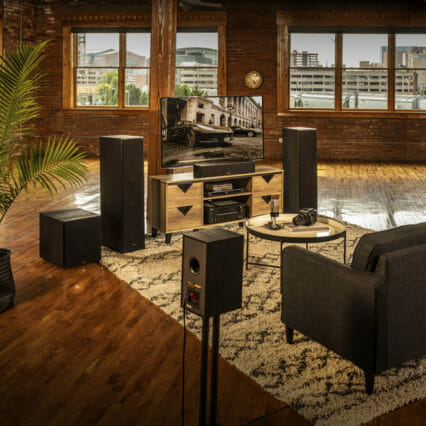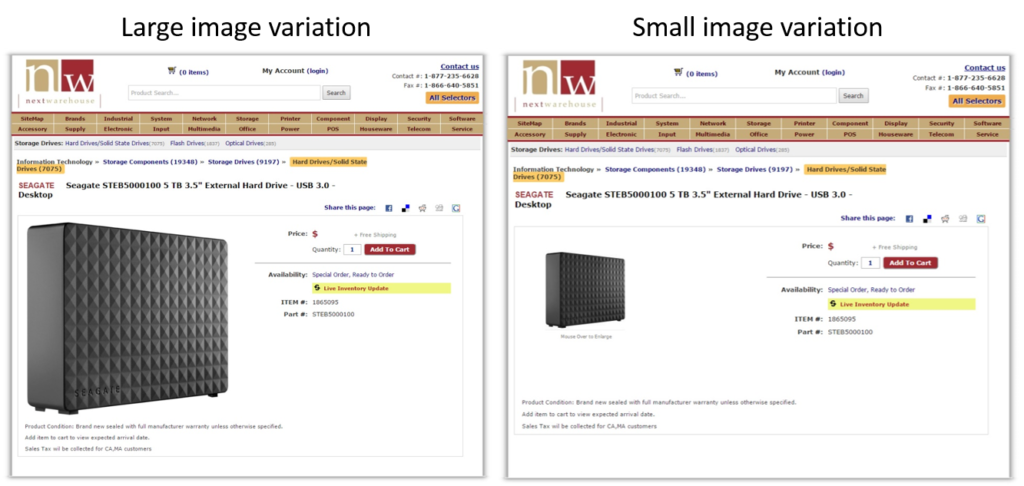Why do some ads perform better than expected? Why does an ‘ugly’ CTA sometimes convert better than one that is professionally designed? Understanding perceptual sets and how they affect our behavior and decisions can give you better insight into improving and optimizing your marketing strategy.
Table of contents
What are perceptual sets?
A perceptual set is a predisposition to perceive and notice stimuli, while ignoring other things in the available sensory data.
How many legs does the elephant have? Three? Four? Five? Can you even tell for sure?
How about this image?
Do you see 13 or B?
If you say 13, look at the following image:
Do you still see 13? Or do you now see B?
How about now?
Context matters.
Whether you choose 13 or B, there were invisible forces at play; If you just finished dealing with numbers in Google Sheets, you most likely saw number “13.”
If you are a writer or deal mostly with text, however, you most likely saw the letter “B.”
By placing the “number/letter” between numbers (12, “13,” or 14) or between letters (A, “B,” or C), you can influence what you see.
As Paul Rookes and Jane Wilson explain in their book Perception:
“Sets have a wide range of functions. They are affected by motivation, emotion, past experience, and expectations and serve to make perception more efficient. This is achieved because sets reduce the choice between alternatives. This means that predisposition towards a stimulus will make any choice quicker than considering all the alternatives.”
Knowing the role perceptual sets affects our behavior ultimately allows you to build better offers, landing pages, and messaging.
Let’s look at some examples.
What Feeling, Sensation, or Need Does Your Brand Provoke?
In a 1936 study published in The Journal of Psychology, participants were deprived of food for up to 4 hours before being asked to interpret ambiguous pictures. The study found that the longer participants were deprived of food, the more likely they were to interpret the images related to food.
“In an attempt to explain conditioned behavioral reactions, traces of past experiences may become active and influence behavioral responses without being present as such in the subject’s consciousness.”
Source
In short, the context in which your customers and prospects engage with your content, product, or ads can affect their behavior, even unconsciously.
Take this example on priming previously covered at CXL.
So if I’m shopping on this site, and I see the coupon field, then suddenly I’m thinking about saving money with coupons. It might not have even crossed my mind before that. The presence of that box, however, primes me to leave the checkout flow and search for a promo code. And if I can’t find one, I’ve got FOMO (fear of missing out). Cue cart abandonment.
Another example of this is mentioning ‘trigger words’ that cause a visceral reaction. For example, spam. If a cleaner came to your house and mentioned they weren’t going to steal anything, what would you immediately think? That they were going to steal something! Mentioning the word spam near an email sign up could have the same effect.
In another study, psychologists presented ten nonsense syllables to observers, five of which were paired with electric shocks. Once conditioning had been achieved, the ten syllables were then introduced quickly (too fast to be consciously recognizable) to the participants.
It was observed that the physiological responses to syllables paired with electric shocks were the same when these syllables were reintroduced in the absence of shocks.
While this study shows how powerful conditioning can be, the good news is that you can capitalize on its findings for your marketing efforts.
How did Coca-Cola become one of the most iconic brands of all time? Big budgets? A great product? Perhaps the answer is more complex.
Or this one:
While there are many factors responsible for Coca-Cola’s success, their effort to pair Coke with thirst certainly helped establish themselves as the go-to soft drink for millions worldwide.
What feelings, sensations, and needs do customers associate with your brand? If you’re unsure, or there’s a disconnect between what you think and how your customers feel, talking with your customers goes a long way in bridging the gap.
The Ebbinghaus Illusion and Product Value Perception
With more people preferring to shop online than ever before, it can often be challenging to represent the actual size of a lot of products. However, in many cases, perception of your product’s size can make or break people’s decision to purchase.
So how do you go about boosting conversions by accurately representing the size of your product?
The below image just might give a clue:
Which of the two middle circles is bigger?
The second one in the smaller image, right?
Turns out, both middle circles are the same size.
If you’re like most people who selected the middle circle in the smaller image as bigger, you just fell victim to the “Ebbinghaus illusion.”
In essence, the Ebbinghaus illusion, or Titchener’s illusion, reveals that a circle surrounded by other circles will appear smaller if the surrounding circles are enlarged and bigger if the surrounding circles are reduced.
The surrounding circles serve as “anchors” through which the middle circle’s value is judged. Of course this phenomena doesn’t just apply to circles.
For example, chefs and food companies regularly use this effect to create a certain impression about their products.
Food can be pictured on a much bigger plate to make a serving appear smaller or in a much smaller plate to make a serving appear bigger depending on the target audience.
The homepage of diet company Nutrisystem is another good example:
They use smaller plates in their branding photos to make it seem like they are delivering delicious meals with low calories.
Overstock is another brand that does a great job of showing you how their products may look in your home or office.

Klipsch also puts their products in perspective.
When searching for a speaker, you’ll find:

As well as:
Why?
To give buyers a better idea of what the speaker looks like in a ‘real’ environment.
This principle can be used with any product:
Instead of just showing the image of your products, you can show images of the products in the settings in which they will be used to give a better idea of how they look. Showing a T.V. in a room setting can help create an actual impression of its size.
Let’s use the flat screen T.V. page on Best Buy as an example:
Clearly, the 70″ T.V. is larger than the 32″, but it’s hard to put that in perspective visually without any ques.
Now, placing each of these T.V.’s in a room setting gives a clearer idea of the actual size.
That said, it is important to note that the Ebbinghaus illusion can easily be abused in a way that backfires and hurts your brand—so you want to use it carefully.
Case in point is furniture company DFS:
In an attempt to boost sales of its sofas, DFS hired actors and celebrities to appear on/around their sofas. No problem there. But they digitally altered the actors and actresses size to make their products seem bigger then they actually were.
While this resulted in more purchases in the short term, many customers felt duped. The Advertising Standards Association even went as far as to ban their ads, which generated a massive slew of bad press.
Perception of Product Value
Covered previously on CXL, research found a direct link between the size of a product’s image and how much people were willing to pay for the product. Why? We naturally tend to equate more size with more bang for our buck.
The study found that people perceived the larger hard drives to be more valuable, and as a result, were willing to pay more. People were willing to pay $13.50 more for the hard drive simply because the image was bigger.
The reverse was the case for experience focused goods. People were willing to pay less for the shirt in the study when the image was large. The research found that people perceived the shirt to be less valuable and were willing to pay $1 less when the image of the shirt was large.
Of course, there’s no “one size fits all” image size for products; it depends on the product involved and what category the product falls into. As with most things in marketing, you should always test what works best for you.
Perception Lessons from Fancy Hotels and Fast Food
Another case study that shows how perception can affect behavior and ultimately sales is economist Richard Thaler’s famous Beer on the Beach experiment:
Imagine being stranded on the beach on a hot day, thirsty and longing for a cold bottle of your favorite beer. Your friend offers to get you a cold bottle of beer from the only nearby place where beer is being sold—either a fancy resort hotel or a rundown grocery store. However, the difference is that beer from the fancy hotel costs more than beer from the rundown grocery store — even though it’s the same beer. How much would you be willing to pay?
Thinking about it rationally, you may think people would pay the same or only slightly more for beer from the fancy hotel.
Thaler found that even though the beer wasn’t to be consumed at the hotel, and the thirsty person wasn’t the one to go get the beer, most people would willingly pay a lot more because the beer was bought from a fancy hotel.
How much more? An average of $2.65 for the same beer if it comes from a fancy hotel and $1.50 if it comes from the rundown grocery store. They considered $2.65 fair value for the beer from the fancy hotel and a rip off for the Beer from the rundown grocery store.
Perception of a product plays a significant role in what price people will consider paying for it. It’s why people will consider paying two to three times more for an Apple product and balk at paying half as much for a product of comparable quality if it comes from a different brand.
This principle applies to children as much as it does adults:
A study of 3—5-year-olds found that most children found food served in a McDonald’s bag to taste better than when served in a plain white bag—even if it’s the same food. The study also found that 77%t of children believed that french fries tasted better when served in a McDonald’s bag compared to just 13 percent who liked the same fries served in a plain white bag.
So it’s not actually the fries in this case. It’s the McDonald’s bag!
This didn’t just apply to french fries. The study also found that the same effect extended to carrots as well:
Fifty-four percent of the children studied believed that carrots served in a McDonald’s bag tasted better compared to just 23 percent who liked carrots served in plain bags and thought they tasted the same.
Talk about the power of framing and positioning.
Are you positioning your products and services effectively?
Positioning is a secret superpower that, when harnessed correctly, can change the way the world thinks about a problem, a technology or even an entire market.
– April Dunford
Conclusion
As much as we like to believe we think rationally, we humans are anything but.
Why else would we be willing to pay 77% more for the same beer simply because it comes from a fancy hotel? Why else would we pay more for a larger hard drive even if a smaller one has the exact same amount of space?
While understanding human behavior and psychology is a lifelong pursuit, it pays to learn the many ways in which we don’t act or behave as we should.

















Hi Bamidele,
Truly perception and positioning is very important.
We somehow construct our perception about a product based on its positioning and branding.
Thanks for sharing this insight.
Hey Bamidele Onibalusi,
Positioning is a secret superpower that when harnessed correctly , it cab change the way the eorld thinks about a problem ,a technology or even an entire market.
Covered previously on cxl research found a direct link between the size of a product image and how much people were willing to pay for the product.
Nowadays people preferring to shop online, it can often be more difficult to represent actual size of all product so we have to use ebbinghaus illusion very carefully.
thank you ,
-sweety